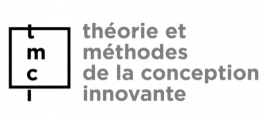Ci-dessous, vous trouverez l’actualité des dernières publications, ainsi que la liste des publications principales issues des recherches menées au sein de la chaire Théorie et Méthode de la Conception Innovante, parues entre 2009 et 2018.
Vous pouvez accéder à ces articles à partir de l’outils « l’Archive ouverte – Open Archive » de MINES ParisTech en cliquant ici, ou bien en vous adressant directement au premier auteur.

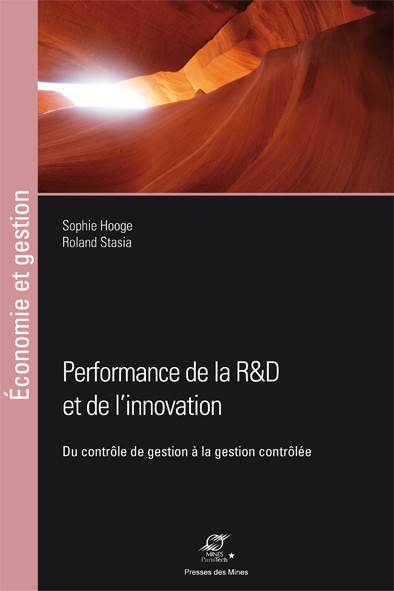
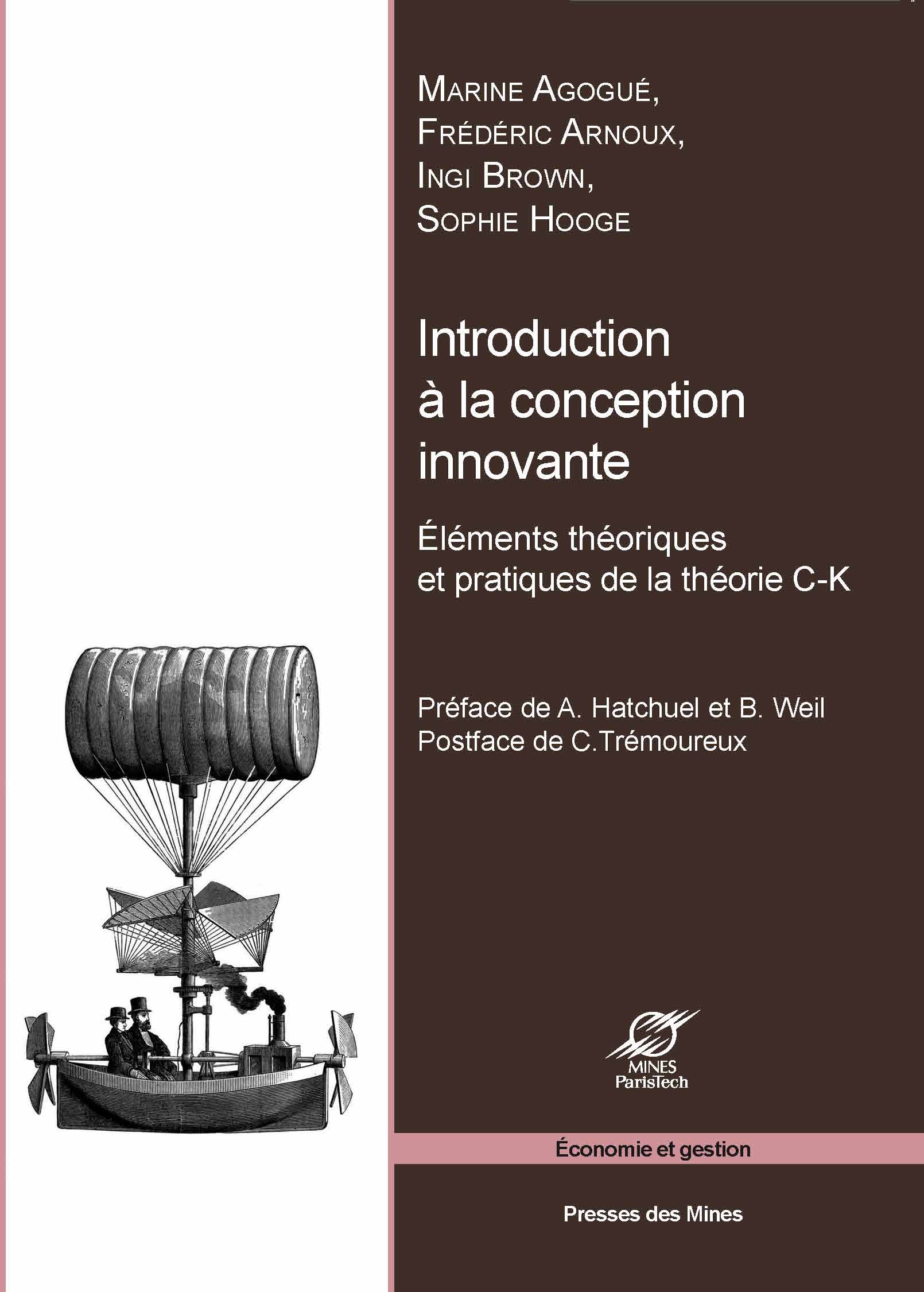
Parution de l’ouvrage : Design Theory – Methods and Organization for Innovation
Parution de l’ouvrage : Design Theory – Methods and Organization for Innovation
Parution de l’ouvrage : Performance de la R&D et de l’innovation Du contrôle de gestion à la gestion contrôlée
Parution de l’ouvrage : Performance de la R&D et de l’innovation Du contrôle de gestion à la gestion contrôlée
Parution de l’ouvrage : Introduction à la conception innovante – Éléments théoriques et pratiques de la théorie C-K
Parution de l’ouvrage : Introduction à la conception innovante – Éléments théoriques et pratiques de la théorie C-K
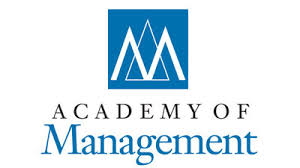
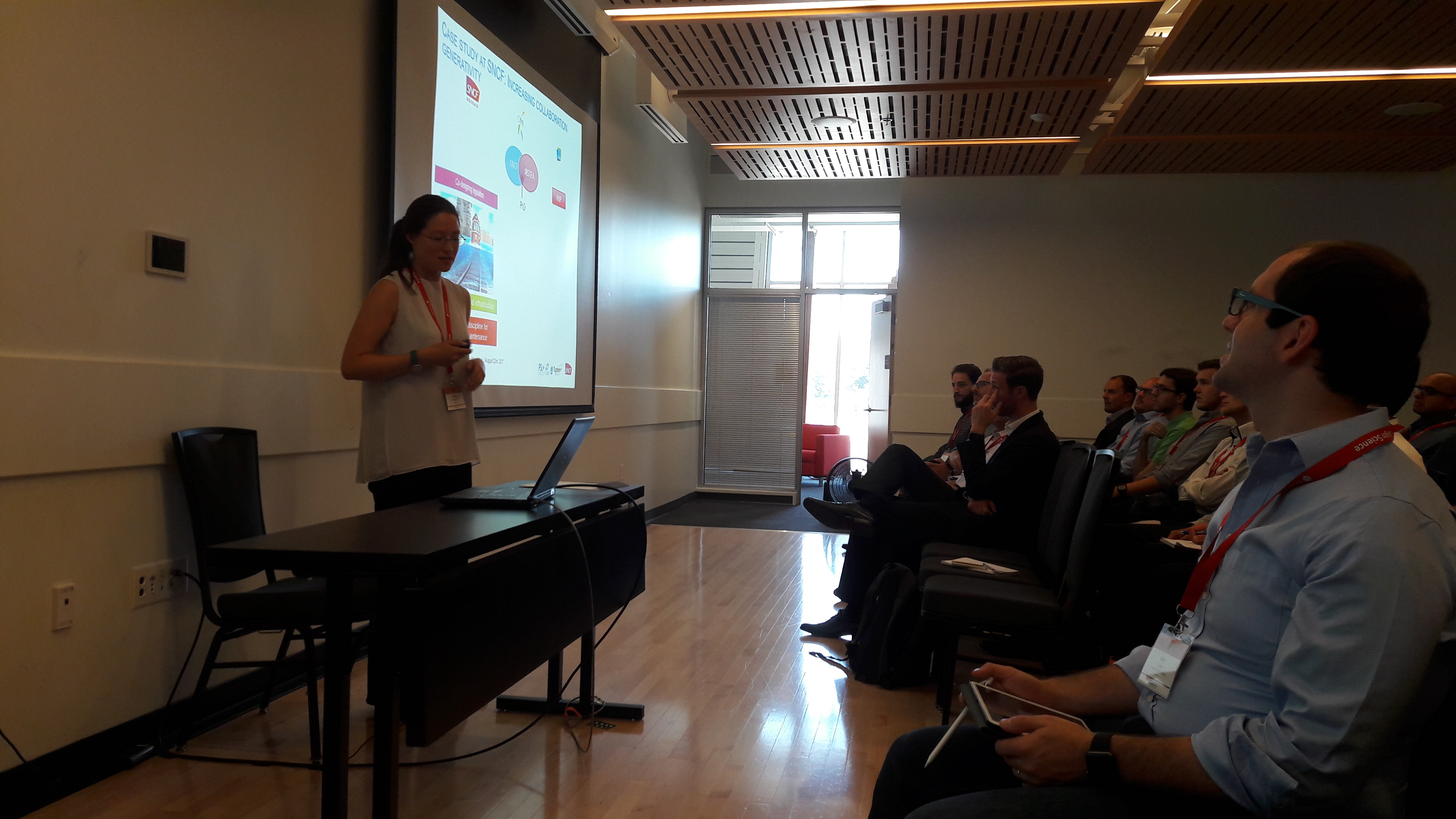
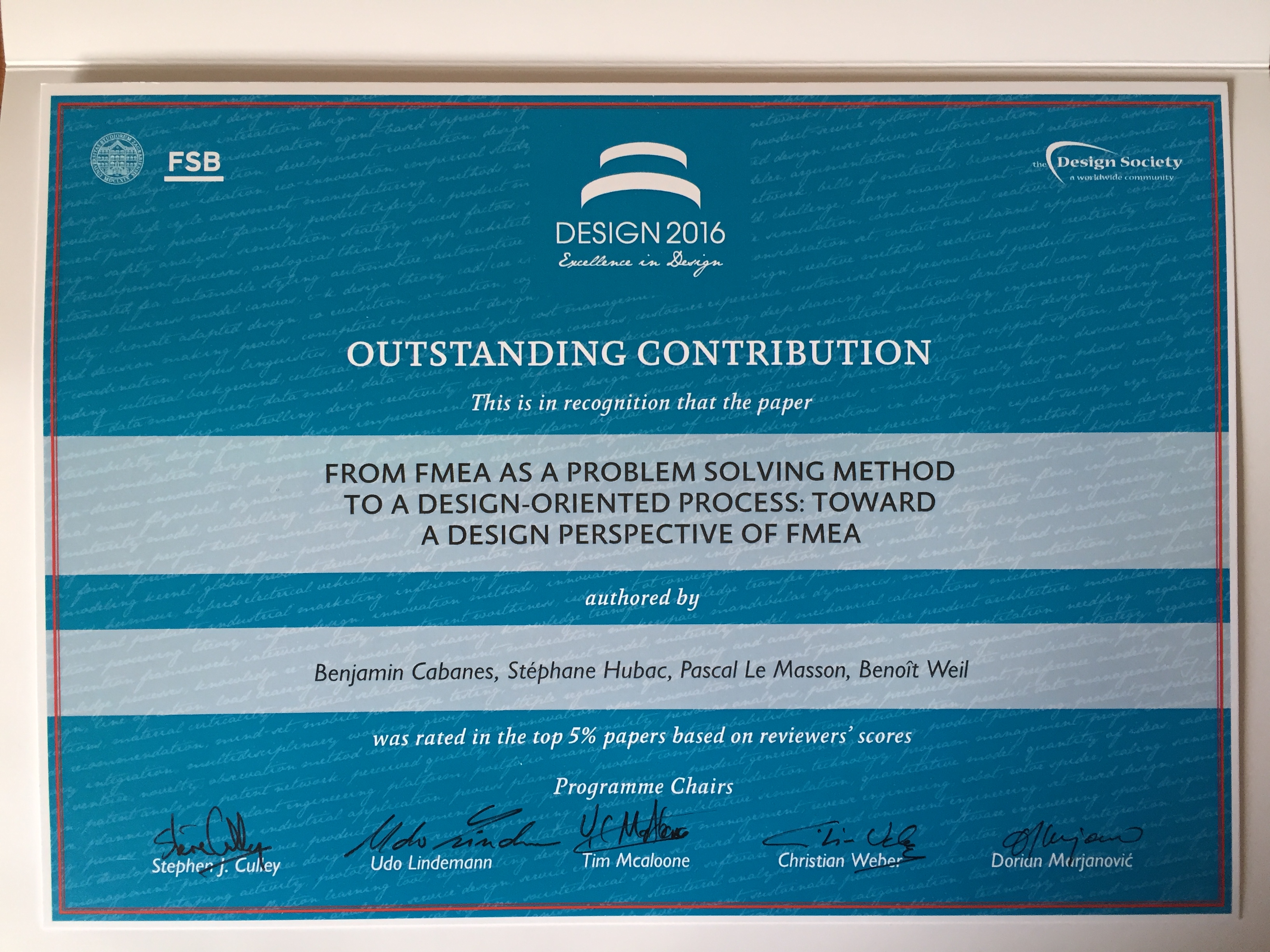
Un article parmi les meilleurs 10% de la conférence Academy of Management
Un article parmi les meilleurs 10% de la conférence Academy of Management
Les partenaires de la chaire présentent leurs travaux à la conférence ICED17 Vancouver
Les partenaires de la chaire présentent leurs travaux à la conférence ICED17 Vancouver
Prix « Outstanding contribution », 14th International Design Conference, 2016, Croatie
Prix « Outstanding contribution », 14th International Design Conference, 2016, Croatie
Axe 1 – Fondements des théories de la conception et du raisonnement dans l’inconnu
- CARVAJAL PEREZ, D., ARAUD, A., CHAPERON, V., LE MASSON, P., & WEIL, B. (2018). Generative Heritage: Driving Generativity through Knowledge Structures in Creative Industries. Lessons from Cuisine. In DS92: Proceedings of the DESIGN 2018 15th International Design Conference(pp. 1523-1534)
- HATCHUEL, A., LE MASSON, P., REICH, Y. AND SUBRAHMANIAN, E. (2018). Design theory: a foundation of a new paradigm for design science and engineering. Research in Engineering Design, Springer Verlag, 2018, 29 (1), pp.5-21.
- LE MASSON, P., HATCHUEL, A. AND WEIL, B. (2018). Théorie C-K-Fondements et implications d’une théorie de la conception. Les Techniques de l’Ingenieur, Editions T.I.
- HATCHUEL, A., LE MASSON, P., REICH, Y. & SUBRAHMANIAN, E. 2017. Design theory: a foundation of a new paradigm for design science and engineering. Research in Engineering Design.
- KOKSHAGINA, O. & LE MASSON, P. 2017. Fast-Connecting Search Practices. Technological Forecasting and Social Change, pp. 232-239.
- LE MASSON, P. 2017. La théorie C-K. In: I. Blanc et C. DENIS-REMIS. (eds.) Histoires de Sciences et Entreprises. Presses des Mines.
- LE MASSON, P., HATCHUEL, A. & WEIL, B. 2017. Design theories, creativity and innovation. The Elgar Companion to Innovation and Knowledge Creation.
- Potier, O., Brun, J., Le Masson, P., and Weil, B. (2015). How innovative design can contribute to Chemical and Process Engineering development? Opening new innovation paths by applying the C–K method. In Chemical Engineering Research and Design, page 15, 2015.
- Kazakçi, A. (2015). Data science as a new frontier for design. In International Conference on Engineering Design, Milan, Italy, July 2015.
- Le Masson, P., Hatchuel, A., Kokshagina, O., and Weil, B. (2015). Generic technique and the dynamics of technologies: using matroid and design theory to design techniques with systemic impact. In International Conference on Engineering Design, Milan, Italy, July 2015a.
- Brun, J., Le Masson, P., and Weil, B. (2015). Analyzing the generative effects of sketches with design theory: sketching to foster knowledge reordering. In International Conference on Engineering Design, Milan, Italy, July 2015a. `
- Freitas Salgueiredo, C., and Hatchuel, A. (2015 accepted). “Beyond analogy: A model of bio- inspiration for creative design.” AI EDAM, (accepted) pp.
- Schmid, A-F. (2015). Conclusion: Pour une histoire interdisciplinaire des sciences de la Terre et de l’Univers. Epist ́emologie g ́en ́erique, conception et intrerdisciplinarit ́e. In St ́ephane Le Gars et Guy Boistel, editor, Dans le champ solaire. Cartographie d’un objet scientifique,pages221– 233. Hermann, January 2015d.
- Le Masson, P., Weil, B., and Kokshagina, O. (2015). “A new perspective for risk management: a study of the design of generic technology with a matroid model in C-K theory.” Principia Designae Pre-Design, Design, and Post-Design – Social Motive for the Highly Advanced Technological Society, T. Taura, ed., Springer, Tokyo pp. XXVII, p 239.
- Arrighi, P.-A., Le Masson, P., and Weil, B. (2014). “Addressing constraints creatively: how new design software helps solve the dilemma of originality and feasibility ».” Creativity and Innovation Management, Published on line Oct 2014.
- Kazakçı A. Osman. (2014) Conceptive Artificial Intelligence: Insights from design theory,International Design Conference DESIGN2014, Croatie.
- Akin Kazakçi a obtenu l’Outstanding Paper Award de la conférence « Design 2014 » pour son papier « conceptive artificial intelligence: insights from design theory ».
- Kroll, E., Le Masson, P., and Weil, B, (2014). Steepest-first exploration with learning- based path evaluation: uncovering the design strategy of parameter analysis with C–K theory. Research in Engineering Design (Res Eng Design). Published online : 18 july 2014
- Schmid, AF., Hatchuel, A. (2014) On generic Epistemology. Angelaki, Journal of Theoretical Humanities, 2014, 19 (2), pp.131-144.
- Hatchuel, A., Reich, Y., Le Masson, P., Weil, B., Kazakçi, A. (2013). « Beyond Models and Decisions: Situating Design Through Generative Functions. » ICED 2013, August 19-22, Seoul, Korea
- Kokshagina O., Le Masson, P., Weil, B., Cogez, P. (2013). « How design theories enable the design of generic technologies: notion of generic concept and genericity improvement ». ICED 2013, August 19-22, Seoul, Korea
- Giacomoni G. (2013). « Why innovative design requires new scientific foundations for manageable identities of systems »
- Agogué, M., Kazakci, A. « 10 years of C-K theory: a survey on the academic and industrial impacts of a design theory. » ICORD’13, Bangalore, India
- Hatchuel, A., Weil, B., and Le Masson, P. (2012). “Towards an ontology of expansion: lessons from C-K Design theory and Forcing.” Research in Engineering Design, (accepted), pp.
- Kazakci, A. (2012). « On the imaginative constructivist nature of design : a theoretical approach ». Research in Engineering Design.
- AF. (2012). «Interdisciplinarité et philosophie comme expérience «en plein champ ». Natures Sciences Sociétés
- Le Masson, P., Weil, B. (2012). «Design theories as languages of the unknown: insights 3 from the German roots of systematic design (1840–1960). Research in Engineering Design.
- Hatchuel, A., P. Le Masson, Y. Reich and B. Weil (2011). A systematic approach to design theories using generativeness and robustness. International Conference on Engineering Design, ICED11, Technical University of Denmark.Reviewers favorites ICED 2011
- Le Masson, P., A. Hatchuel, and B. Weil (2011). « The Interplay between Creativity Issues and Design Theories: A New Perspective for Design Management Studies? » CIM 20(4): 217-237.
- Nominated for the Tudor Rickards & Susan Moger Best Paper Award 2011
- Giacomoni, G. (2011). Real and Imaginary Parts of Complex Numbers: A Model of Design to be Generalized to All Objects? Law, Cognition, & Decisionmaking eJournal, 3(23).
- Hendriks, L. and A. Kazakçi (2011). A Method for Design Reasoning Using Logic: from Semantic Tableaux to Design Tableaux. International Conference on Engineering Design, ICED’11, Copenhagen, Technical University of Denmark.
- Schmid, A.-F., M. Mambrini-Doudet, and A. Hatchuel (2011). « Nouvelles logiques de l’interdisciplinarité » Nouvelles Perspectives en Sciences Sociales 7(2): 105-136.
- Hendriks, L. and A. Kazakci (2010). A formal account of the dual expansion of concepts and knowledge in C-K theory. International Deisgn Conference – Design 2010, Dubrovnik – Croatia, May
- Le Masson, P. and B. Weil (2010). « Aux sources de la R&D : genèse des théories de la conception réglée en Allemagne (1840-1960). » Entreprises et histoire 2010(1): 11-50.
- Hatchuel, A., and Weil, B. (2009). “C-K design theory: an advanced formulation.” Research in Engineering Design, 19, pp. 181-192.
- Kazakçi, A., and Hatchuel, A. (2009) “Is « creative subject » of Brouwer a designer? -an Analysis of Intuitionistic Mathematics from the Viewpoint of C-K Design Theory? .” International Conference on Engineering Design, ICED’09, Stanford CA, 24-27 August 2009.
- Shai, O., Reich, Y., Hatchuel, A., and Subrahmanian, E. (2009) “Creativity Theories and Scientific Discovery: a Study of C-K Theory and Infused Design.” International Conference on Engineering Design, ICED’09, 24-27 August 2009, Stanford CA. Outstanding paper award ICED 2009
Axe 2 – Outils collectifs du raisonnement dans l’inconnu et nouvelles formes d’organisation pour la conception innovante
- Brun, J., Le Masson, P. and Weil, B. (2018). Getting inspiration or creating inspiration? The role of knowledge structures in idea generation. Design 2018 – International Design Conference, May 2018, Dubrovnik, Croatia. Proceedings of the DESIGN 2018 15th International Design Conference.
- Hatchuel, A. and Segrestin, B. (2018). A Century Old and Still Visionary: Fayol’s innovative Theory of Management. European Management Review, Wiley.
- Sitruk, Y. and Kazakci, A. (2018). Crowd-based data-driven hypothesis generation from data and the organisation of participative scientific process. Design 2018 Conference, May 2018, Dubrovnik, Croatia
- Hatchuel, A., Le Masson, P. & Weil, B. 2017. Comprendre et soutenir l’innovation contemporaine : théorie de la conception et métabolisme des nouveaux collectifs. La lettre de I’InSHS.
- Kokshagina, O., Gillier, T., Cogez, P., Le Masson, P. & Weil, B. 2017. Using innovation contests to promote the development of generic technologies. Technological Forecasting and Social Change, 114, 152-164.
- Kokshagina, O., Le Masson, P. & Weil, B. 2017. Should we manage the process of inventing? Designing for patentability. Research in Engineering Design.
- Le Glatin, M., P. Le Masson & Weil, B. (2017), Generative action and preference reversal in exploratory project management, CERN IdeaSquare Journal of Experimental Innovation ;1(2): 39.
- Segrestin, B., Aggeri, F., Le Masson, P. & David, A. 2017. Armand Hatchuel and the Refoundation of Management Research. In: DAVID B. SZABLA, et al. (eds.) The Palgrave Handbook of Organizational Change Thinkers. Springer.
- Hooge, S. and Dalmasso, C. (2015). Breakthrough R&D Stakeholders: The Challenges of Legitimacy in Highly Uncertain Projects. Project Management Journal, 46(6), December 2015a.
- Agogué, M., Levillain, K. and Hooge, S. (2015). Gamification of Creativity: Exploring the Useful- ness of Serious Games for Ideation. Creativity and Innovation Management, 24(3):415–429, August 2015b.
- Kokshagina, O., Le Masson, P. and Weil, B. (2015). Portfolio management in double unknown situations: technological platformsand the role of cross-application managers. Creativity and Inno- vation Management, May 2015a.
- Gillier, T., Hooge, S. and Piat, G. (2015). Framing value management for creative projects: An expansive perspective. International Journal of Project Management, 33(4):947–960, May 2015.
- Segrestin, B., Levillain, K., and Hatchuel, A. (2015) Renewing the debate on the purpose of the corporation: A purpose-driven model of the corporation. In EURAM Conference 2015, Warsaw, Poland, June 2015b.
- Hatchuel, A., Le Masson, P., Weil, B., Agogué, M., Kazakçi, A., and Hooge S. (2015). Multiple forms of applications and impacts of a design theory -ten years of industrial applications of C-K theory. In Impact of Design Research on Industrial Practice – Tolls, Technology and Training. August 2015.
- Elerud‐Tryde, A., and Hooge, S. (2014). Beyond the Generation of Ideas: Virtual Idea Campaigns to Spur Creativity and Innovation. Creativity and Innovation Management.
- Hatchuel, A. (2014). L ’entreprise comme création collective, une mission à réinventer, pp178-202, Ouvrage collectif sous la direction de B. Segrestin, B. Roger et S. Vernac, L’Entreprise Point aveugle du savoir, Colloque de Cerisy, Editions Sciences Humaines, 344p.
- Levillain, K., Hatchuel, A., Segrestin, B. (2014). Normer l’entreprise pour l’émanciper ? Vers de nouvelles options juridiques, pp 307-323, Ouvrage collectif sous la direction de B. Segrestin, B. Roger et S. Vernac, L’Entreprise Point aveugle du savoir, Colloque de Cerisy, Editions Sciences Humaines, 344p.
- Segrestin, B., Roger, B., Vernac, S. (2014). Introduction, pp 7-15, Ouvrage collectif sous la direction de B. Segrestin, B. Roger et S. Vernac, L’Entreprise Point aveugle du savoir, Colloque de Cerisy, Editions Sciences Humaines, 344p.
- Arrighi, P.-A., Kazakçi, A. « Lack of integration between engineering and industrial design processes: an analysis based on the historical evolution of professions and tools. » ICED 2013, August 19-22, Seoul, Korea
- Kokshagina, O., Le Masson, P., Weil, B., Cogez, P. (2013). « Platform emergence in double unknown (technology, markets): common unknown strategy ». In: Çetindamar, D., Daim, T., Başoğlu, N. & Beyhan, B. (eds.) Strategic planning decisions in the high tech industry. London: Springer –
- Börjesson, S., Elmquist, M., & Hooge, S. (2013). « The challenges of innovation capability building: Learning from longitudinal studies of innovation efforts at Renault and Volvo Cars. » Journal of Engineering and Technology Management, vol. 31,January-March 2014, 120-140.
- Decomps, B., Hatchuel, A., Peccoud, Dominique., Roucairol, G. (2013) « La technologie, une école d’intégration de différentes formes de la raison : Pour une reconnaissance de sa place au lycée dans les filières d’enseignement général»Académie des Technologies
- Le Masson, P., Cogez, P., Felk, Y., and Weil, B. (2012). “Revisiting Absorptive Capacity with a Design Perspective.” International Journal of Knowledge Management Studies, Accepted, published, pp.
- Elmquist, M., and Segrestin, B. (2012). « Towards New R&D Processes for Sustainable Development in the Automotive Industry: Experiencing Innovative Design». In Calabrese G. (Ed.) The Greening of the Automotive Industry, Palgrave Macmillan, p. 69-85.
- Felk, Y., P. Le Masson, B. Weil and A. Hatchuel (2011). Designing patent portfolio for disruptive innovation – a new methodology based on C-K theory. International Conference on Engineering Design, ICED’11, Copenhagen, Technical University of Denmark.
- Brown, I., P. Le Masson, and B. Weil (2011). Enabling and Controling Third-party Developpers: a Study of Apple’s Iphone AppDesignEnvironement.Internationalacheterduviagradans unepharmacie ProductDevelopmentManagementConference,IPDM18,Delft,The Netherlands.
- Yström, A. and M. Agogue (2011). Radical Open Innovation: the New Role of Intermediaries -Findings from Collaborative Intermediary Arenas in Sweden and France. International Product Development Management Conference, IPDM18, Delft, The Netherlands.
- Hooge, S. and C. Dalmasso (2011). Learning from Innovation Echoes in Mature Organizations: the Case of the Auto Industry. International Product Development Management Conference, IPDM18, Delft, The Netherlands.
- Arnoux, F., Béjean, M. (2010). Strategies for Building Radical Innovation Potential : Exploring the Role of Collaborative Creative Design Methods, International Product Development Management Conference. Murcia, Spain.
- Giacamoni, G. (2010). Identité et évolutions des objets: Product Lifecycle Management et gestion des configurations. Système d’Information et Management (soumis).
- Cogez, P., P. Le Masson and B. Weil (2010). The management of a new common goods for collective growth in ecosystems: roadmapping for disruptive innovation in semiconductor industry. International Product Development Management Conference. Murcia, Spain : 30.
- Elmquist, M., and Segrestin, B. (2009). “Sustainable development through innovative design: lessons from the KCP method experimented with an automotive firm.” International Journal of Automotive Technology and Management, 9, (2), pp. 229-244.
- Kazakçi, A. O., Gillier, T., and Piat, G. (2008) “Investigating co-innovation in exploratory partnerships: An analytical framework based on design theory.” Erima, Proceedings of European Research in Innovation and Management Alliance, Porto, 11.
- Hatchuel, A., Le Masson, P., and Weil, B. (2009) achat viagra onlin e “Design Theory and Collective Creativity: a Theoretical Framework to Evaluate KCP Process.” International Conference on Engineering Design, ICED’09, 24-27 August 2009, Stanford CA.
- Hooge, S., and Hatchuel, A. (2008). “Value indicators and monitoring in innovative PDM: a grounded approach.” International Product Development Management Conference, Hamburg, 14.
- Segrestin, B. (2009). “Collaborative innovation capabilities: developing platforms through « design games ».” 16th International Product Development Management Conference, University of Twente, Enschede, the Netherlands, 15.
- Crété, M. (2018). La « gestion » à l’époque romaine : naissance d’une nouvelle catégorie de l’action collective », Entreprises et histoire, 2018/1 (n° 90), p. 161-177
Axe 3 – Approches cognitives, neuropsychologues et culturelles de la conception innovante
- Camarda, A., Salvia, E., Vidal, J., Weil, B., Poirel, N., et al.. (2018). Neural basis of functional fixedness during creative idea generation: an EEG study. Neuropsychologia, Elsevier.
- Camarda, A., Borst, G., Agogue, M., Habib, M., Weil, B. et al. (2018). Do We Need Inhibitory Control to Be Creative? Evidence From a Dual-Task Paradigm. Psychology of Aesthetics, Creativity, and the Arts, American Psychological Association.
- Ezzat, H., Agogué, M., Le Masson, P., Weil, B. and Cassotti, M. (2018). Specificity and Abstraction of Examples: Opposite Effects on Fixation for Creative Ideation. The Journal of Creative Behavior, Wiley, 2018.
- Camarda, A., Borst, B., Agogué, M., Habib, M., Weil, B., Houdé, O., & Cassotti, M. (2017) Do we need inhibitory control to be creative? Evidence from a dual-task paradigm. Psychology of Aesthetics, Creativity and the Arts, Nov 2017.
- Ezzat, H., Camarda, A., Cassotti, M., Aguogué, M., Houdé, O., Weil, B., Le Masson, P. & Runco, M. A. 2017. How minimal executive feedback influences creative idea generation. PLoS ONE, 12.
- Ezzat, H., Le Masson, P., & Weil, B. (2017), Extending lab results to advices for leadership facilitating creativity in organizations, CERN IdeaSquare Journal of Experimental Innovation ;1(2): 17.
- Hatchuel, A., Le Masson, P., & Weil, B. 2017. C-K Theory: modelling creative thinking and its impact on research. Creativity, Design Thinking and Interdisciplinarity.
- Agogué, M., Le Masson, P., Dalmasso, C., Houdé, O., and Cassotti, M. (2015). Resisting classical solutions: The creative mind of industrial designers and engineers. Psychology of Aesthetics, Creativity,andtheArts,page10.1037/a0039414,August2015a.
- Agogué, M., and Le Masson, P. (2015). Rethinking ideation: a cognitive approach of innovation lock-ins. In Academy Of Management, Vancouver, Canada, August 2015.
- Brun, J., Ezzat, H., and Weil, B. (2015). Managing the impacts of non-verbal devices on idea generation: a new challenge for creative leaders. In European Academy of Management – EU-RAM, Varsovie, Poland, June 2015b.
- Cassotti, M., Agogué, M., Camarda, A., Houdé, O., and Borst, G. (2015 accepted). Inhibitory control as a core process of creative problem solving and ideas generation from childhood to adulthood. New Directions for Child and Adolescent Development (in press).
- Cassotti, M., Camarda, A., Poirel, N., Houdé, O., & Agogué, M. (2015 accepted). Fixation effect in creative ideas generation: Opposite impacts of example in children and adults. Thinking Skills and Creativity, 19, 146-152.
- Gillier, T., Piat, G., Kazakci, A., (2014). The creation of breakthrough concepts by design teams, 14th annual conference of Euram Academy of Management
- Agogué M., Kazakçi A.O., Hatchuel A., Le Masson P., Weil B., Poirel N. & Cassotti M. (2013). « The impacts of examples on originality: explaining fixation and stimulation effects. » Journal of Creative Behavior, doi 10.1002/jocb.37.
- Agogué M., Poirel N., Pineau A., Houdé O., Cassotti M. (2013) « The impact of age and training on creativity: a design-theory approach to study fixation effects. »Thinking Skills and Creativity, 11(1), p33-41.
- Cassotti, M., Poirel, N., Pineau, A., and Agogue, M. (2012). Fixation effect in creative problem solving : Opposite impacts of example in children and adults. Jean Piaget Society conference, May 2012, Toronto.
- Agogue, M., A. Kazakçi, B. Weil and M. Cassotti (2011). The Impact of Examples on Creative Design: Explaining Fixation and Stimulation Effects. International Conference on Engineering Design, ICED’11, Copenhagen, Technical University of Denmark.
- Gentes, A. and M. Béjean (2011). Making Sense of Constellations of Objects: a Case Study of Computer-Aided Writing Practices in Theatrical Staging. IASDR2011, the 4th World Conference on Design Research, Delft, the Netherlands.
- Hatchuel, A., P. Le Masson, et al. (2011). « Teaching Innovative Design Reasoning: How C-K Theory Can Help to Overcome Fixation Effect. » Artificial Intelligence for Engineering Design, Analysis and Manufacturing 25(1): 77-92.
- Hatchuel, A., P. Le Masson and B. Weil (2011). « Teaching Innovative Design Reasoning: How C-K Theory Can Help to Overcome Fixation Effect. » Artificial Intelligence for Engineering Design, Analysis and Manufacturing 25(1): 77-92.
- Kazakci, A., M. Cassotti and A. Hatchuel (2010). Theory-driven experiments in design: Memorandum for a polycentric experimental research on design theory (working paper). Stanford, CA, TMCI CGS, Mines ParisTech.
- Bejean, M., Segrestin, B., and Hatchuel, A. (2009). “Artist and employee: revisiting the employees’ status through the case of art-based firms.” Euram, Liverpool, 25.
- Hatchuel, A., Le Masson, P., and Weil, B. (2009). “Studying creative design: the contribution of C-K theory.” Studying design creativity: Design Science, Computer Science, Cognitive Science and Neuroscience Approaches, J. S. Gero, ed., pp.
Axe 4 – Régimes de conception, économie et histoire de la conception
- Berthet, E., Segrestin, B., and Weil, B.(2018). Des biens communs aux inconnus communs : initier un processus collectif de conception pour la gestion durable d’un agro-écosystème.. Revue de l’Organisation Responsable, ESKA, 13 (1), pp.7-16.
- Bretagnolle, V., Berthet, E., Gross, N., Gauffre, B., Plumejeaud, C. et al. Towards sustainable and multifunctional agriculture in farmland landscapes: Lessons from the integrative approach of a French LTSER platform. Science of the Total Environment, Elsevier, 627, pp.822 – 834.
- Hatchuel, A. (2018). Ecole des Mines de Paris : A few lessons from a Long History. Engineering a Better Future, pp.21-32
- Laousse, D. and Hooge, S. (2018).. Refaire Société par la création de communautés d’innovation – Le cas des ateliers SpotLAB sur les nouvelles mobilités en régions. Revue Française de Gestion, Lavoisier, Management de l’Innovation Collective, 44 (272), pp.85 – 102.
- Salembier, C., Segrestin, B., Berthet, E., Weil, B. and Meynard, JM. (2018).. Genealogy of design reasoning in agronomy: Lessons for supporting the design of agricultural systems. Agricultural Systems, Elsevier Masson, 164, pp.277-290.
- Vourc’H, G., Brun, J., Ducrot, C., Cosson, J-F., Le Masson, P. et al. (2018)., Using design theory to foster innovative cross-disciplinary research: Lessons learned from a research network focused on antimicrobial use and animal microbes’ resistance to antimicrobials. Veterinary and Animal Science, 6, pp.12 – 20.
- Agogué, M., Berthet, E., Frednerg, T., Le Masson, P., Segrestin, B., Stoetzel, M., Wiener, M. & Yström, A. 2017. Explicating the role of innovation intermediaries in the ‘unknown’: a contingency approach. Journal of Strategy and Management, 10, 19 – 39.
- Hatchuel, A. 2017. Dialogue entre Armand Hatchuel et Marie-Françoise Chevallier-Le Guyader. Abécédaire citoyen des sciences.
- Nakhla, M. 2017. La conception d’une régulation par lignées génériques d’instruments. Revue Française de Gestion, 43, 51-69.
- QAOUMI, K., EL, Le Masson, P., Weil, B. & Ün, A. 2017. Testing Evolutionary Theory of Household Consumption Behavior in the case of Novelty – Product characteristics approach. Journal of Evolutionary Economics, 1-24.
- Agogué, M., Lundqvist, M., and Williams Middleton, K. (2015). Mindful Deviation through Combining Causation and Effectuation: A Design Theory-Based Study of Technology Entrepreneur- ship. Creativity and Innovation Management, page 16, 2015.
- Levillain, K., Segrestin, B., and Hatchuel, A. (2015) Reviving the debate on the Corporate Purpose: A purpose-driven model of the corporation. In European Academy of Management (EURAM), Warsaw,Poland,June2015b.
- Canet, E., Hooge, S., and Kokshagina, O. (2015). Comment se cr ́ee l’identit ́e d’entreprise? Processus de construction dans la start-up et impact des r ́ef ́erences identitaires. In XXIVe Conf ́erence Internationale de Management Strat ́egique, Paris, France, June 2015.
- Segrestin, B., and Vernac, S. (2015). Les nouvelles formes de gouvernance et de soci ́et ́es. In B ́en ́edicte Fauvarque-Cosson, editor, Le droit compar ́e au XXI`eme si`ecle. Enjeux et d ́efis. Soci ́et ́e de l ́egislation compar ́ee, November 2015b.
- Segrestin, B., Levillain, K., and Hatchuel, A. (2015). L’objet social ́etendu : une condition pour l’industrie. In Thierry Weil Pierre Veltz, editor, L’industrie, notre avenir, pages pp. 316–324. Eyrolles,January 2015d.
- Hatchuel, A. (2015). De l’industrie aux nouvelles ”industriations”. In L’industrie, notre avenir, pages 37–52.2015.
- Dubois, L.-E., Le Masson, P., Weil, B., and Cohendet, P. (2014). “Co-design : de l’organisation au service de l’innovation à l’innovation au service de l’organisation.”AIMS 2014 Rennes, France, 23.
- Ces auteurs ont reçu le prix du meilleur article.
- Kokshagina O., Gillier T., Cogez P., Le Masson P., Weil B. (2014). Towards a new form of ideas contests in high-tech environment: design community building in double unknown, 74th Annual Meeting of the Academy of Management, États-Unis
- Le Masson, P., and Weil, B. (2014). Réinventer l’entreprise : la gestion collégiale des inconnus communs non appropriables, pp238-256, Ouvrage collectif sous la direction de B. Segrestin, B. Roger et S. Vernac, L’Entreprise Point aveugle du savoir, Colloque de Cerisy, Editions Sciences Humaines, 344p.
- Agogué M., Comtet G., Le Masson P., Menudet J-F., Picard R. (2013) « Managing innovative design within the health ecosystem: the Living Lab as an architect of the unknown. » Revue Management et Avenir Santé, 1(1), pp 17-32
- Cogez, P., Kokshagina O., Le Masson, P., Weil, B. (2013). « Industry-Wide Technology Road Mapping in Double Unknown – The Case of the Semiconductor Industry. » ICE & IEEE – ITMC Conference 2013, June 24-26, Hague, the Netherlands
- Agogué M., Yström A., Le Masson P. (2013) « Rethinking the role of intermediaries as an architect of collective exploration and creation of knowledge in open innovation. »International Journal of Innovation Management, 17(2), pp. 1-24)
- Agogué M., Berthet E., Fredberg T., Le Masson P., Segrestin B., Stoetzel M., Wiener M., Ystrom A. (2013). “Towards an understanding of the role of innovation intermediaries in the “unknown”: A contingency approach.” EURAM 2013, June 26- 29, Istanbul, Turkey.
- Agogue, M., Le Masson, P., and Robinson, D. K. R. (2012). “Orphan Innovation, or when path-creation goes stale: missing entrepreneurs or missing innovation?”
- Technology Analysis & Strategic Management, 24, (6), pp. 603-616.
- Le Masson, P., Weil, B., Hatchuel, A., and Cogez, P. (2012). “Why aren’t they locked in waiting games? Unlocking rules and the ecology of concepts in the semiconductor industry. .” Technology Analysis & Strategic Management, 24, (6), pp. 617-630.
- Agogue, M., Yström, A., and Le Masson, P. (2012). “Expanding the Role of Intermediaries – Achieving collaborative radical innovation by managing exploration processes.” International Journal of Innovation Management, accepted, pp.
- Le Masson, P., Aggeri, F., Barbier, M., and Caron, P. (2012). “The sustainable fibres of generative expectation management: The “building with hemp” case study.” System Innovations, Knowledge Regimes, and Design Practices towards Transitions for Sustainable Agriculture, M. Barbier et B. Elzen, eds., INRA Editions, Parispp. 226- 251
- Berthet, E., Bretagnolle, V., and Segrestin B. Analyzing the Design Process of Farming Practices Ensuring Little Bystard Conservation : Lessons for Collective Landscape Management. Journal of Sustainable Agriculture Volume 36, Issue 3, 2012
- Levillain, K., Hatchuel, A., and Segrestin, B. L’impense de la RSE : la révision du cadre légal de l’entreprise. Revue Française de Gestion, numéro 228-229.
- Le Masson, P., P. Cogez, and B. Weil (2011). Absorptive Capacity for Radical Innovation: A Case Study in the Semiconductor Industry. IEEE International Technology Management Conference, San Jose, CA.
- Segrestin, B. and A. Hatchuel (2011). « Beyond Agency Theory, a Post-crisis View of Corporate Law. » British Journal of Management 22: 484-499.
- Segrestin, B. and A. Hatchuel (2011). « Autorité de gestion et avaries communes : pour un complément du droit de l’entreprise ? » Finance Contrôle Stratégie 14(2): 9-36.
- Le Masson, P., A. Hatchuel and B. Weil (2010). Modeling Novelty-Driven Industrial Dynamics with Design Functions: understanding the role of learning from the unknown. 13th International Schumpeter Society, Aalborg, Denmark.
- Elmquist, M. and P. Le Masson (2009). « The value of a ‘failed’ R&D project: an emerging evaluation framework for building innovative capabilities. » R&D Management 39(2): 136-152.
- Hatchuel, A., K. Starkey, S. Tempest and P. Le Masson (2010). « Strategy as Innovative Design: An Emerging Perspective. » Advances in Strategic Management 27: 3-28.
- Le Masson, P. et Weil,B (2010). « La conception innovante comme mode d’extension et de régénération de la conception réglée : les expériences oubliées aux origines des bureaux d’études. » Entreprises et histoire 58(1): 51-73.
- Le Masson, P., Weil, B., & Hatchuel, A. (2009). « Platforms for the design of platforms : collaborating in the unknown ». Platforms, Market and Innovation, A. Gawer, ed., Edward Elgar, Cheltenham, UK, pp.
Axe 5 – Création, réception et nouvelle critique de la conception
- Gentes A. (2017) Design as Meaning and Form Making: An Introduction. In: The In-Discipline of Design. Design Research Foundations. Springer
- Hatchuel, A. and Bontems, V. (2018). Armand Hatchuel, Vincent Bontems. Dialogue pour une épistémologie de la raison créative. Bachelard et l’avenir de la culture.
- Schmid, A-F (2018) . Les régimes génériques de l’enseignement . Revista Brasileira de Ensino de Ciência e Tecnologia, vol.11, n°2, 2018, p. 1-13.
- Schmid, A-F (2018). The Philosophical Underpinnings of Design Theory. Piter Vermaas & Stéphane Vial. Advancements in the Philosophy of Design, Pieter Vermaas & Stéphane Vial eds, Springer, Springer, pp.415-430, 2018, Advancements in the Philosophy of Design,
- Béjean, M. & Hatchuel, A. 2017. Facing Creation: When the Pragmatic Credo Masks the Orders of Action. Philosophy of management, 16, 1-14.
- Hatchuel, A. 2017. Les implications philosophiques de la théorie de l’action collective. Revue internationale de psychosociologie et de gestion des comportements organisationnels, 1, 187-191.
- Schmid, A.-F. 2017. La notion de critique chez Couturat et ses effets dans sa philosophie des mathématiques. In : MICHEL, F. & SOPHIE, R. (eds.) Louis Couturat (18681914). Mathématiques, langage, philosophie. Paris : Classiques Garnier.
- Gentes, A., and Mollon, M. (2015). Critical Design: a delicate balance between the thrill of the uncanny and the interrogation of the unknown. In D. Bihanic (Ed.), Empowering Users through Design: Interdisciplinary Studies and Combined Approaches for Technological Products and Services (pp. 79–101). Switzerland: Springer Verlag.
- Schmid, A-F. (2015). On Contemporary Objects. In Robin Mackay, editor, Simulation, Exercice, Operations, volume 006 of ”Philosophy/art Theory/Aesthatics”, pages 63–68. Urbanomic, May 2015c.
- Amar, G. (2014). « Du transport à la mobilité – Une prospective des ruptures conceptuelles ».Revue « Transports” Numéro 487, octobre 2014
- Coutellec, L., Schmid, A-F. (2014). « Modélisation, simulation, expérience de pensée ; la création d’un espace épistémologique. Regards à partir des œuvres de Vernadsky et de Poincaré », in : Franck Varenne, Marc Silberstein, Sébastien Dutreuil, Philippe Huhneman eds.,Modéliser et simuler. Epistémologies et pratiques de la modélisation et de la simulation, tome 2, Paris, Editions Matériologiques, p. 21- 48. 3.
- Mollon, M., and Gentes, A. (2014) The Rhetoric of Design for Debate: triggering conversation with an “uncanny enough” artefact (pp. 1–13). Proceedings of the Design Research Society International Consortium (DRS), Kazi-Tani, T. Umeå, Sweden.
- Jutant, C., Gentes, A., Béjean, M., Mivielle, C. (2013) « Design, meaning making and constructive fixation. Conceptualizing semiotic conditions to the process of designing », Tokyo, 5th IASDR, 2013, pp. 3509-3519
- Schmidt, A-F. (2013), « La conjugaison de l’épistémologie et de l’éthique dans la création scientifique », Postface du livre de Léo Coutellec, De la Démocratie dans les sciences. Epistémologies, Ethiques, Pluralisme, Paris, éd. Matériologiques.
- Hatchuel, A. (2013) Deconstructing meaning: industrial design as Adornment and wit. EURAM 2013.
- Gentes, A., Hutant, C. The game mechanics of pervasive applications : Visiting the uncanny. New Review of Hypermedia and Multimédia, vol. 18, Nos. 1_2, March-June 2012, 91-108.
- Coblence, E., Sabatier, V. Articulating growth and cultural innovation in arts museums : The business model renewal of the Louvre. Internation Studies of Management & Organisation (ISM0).
